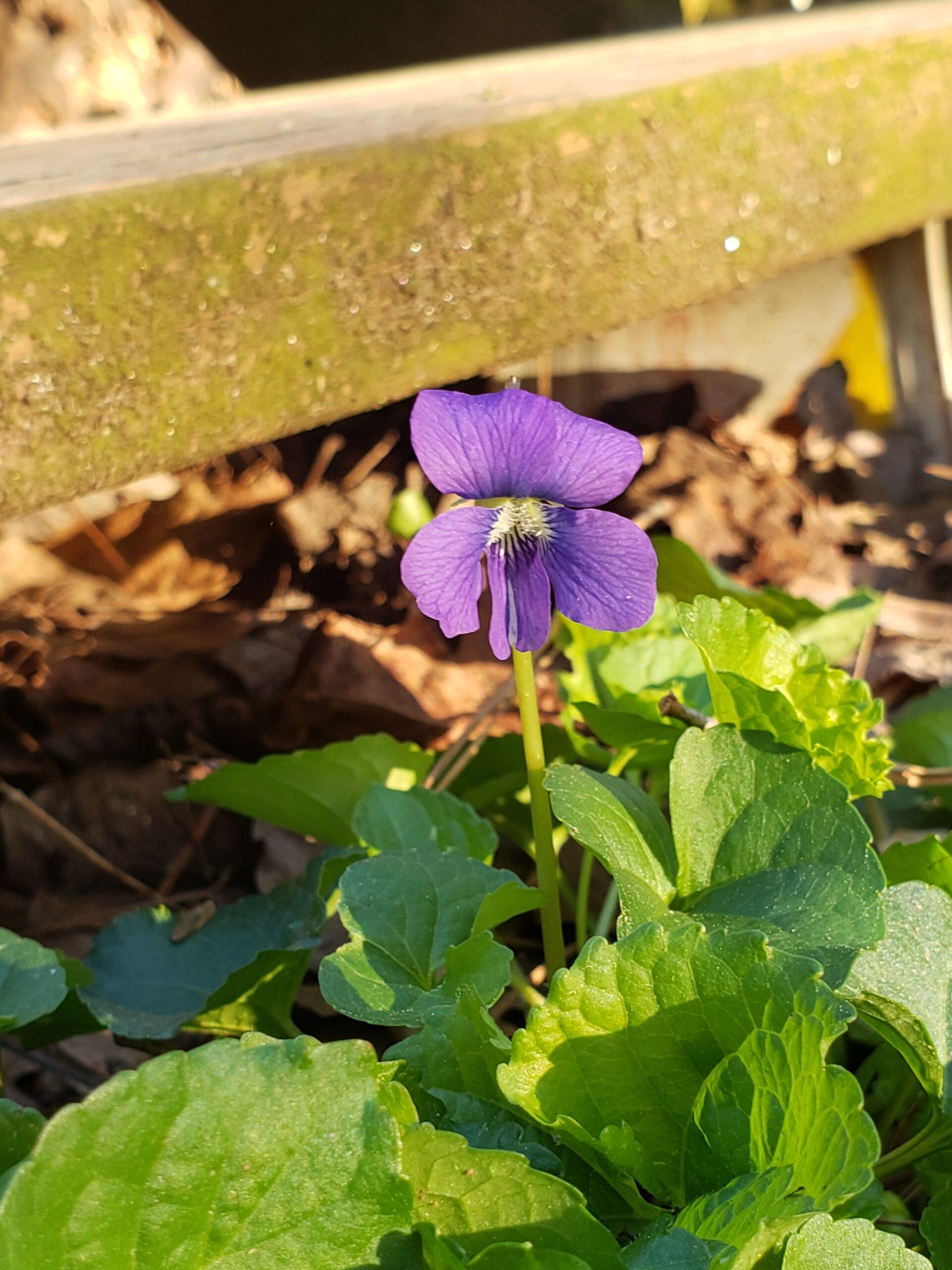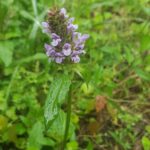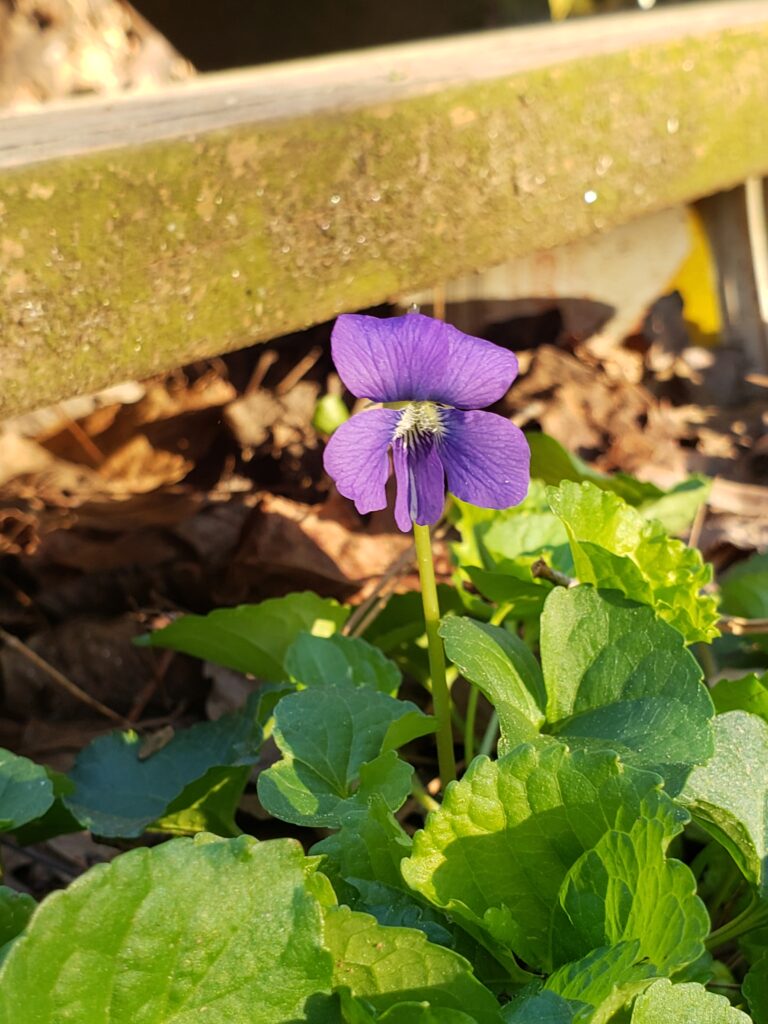
Some flowers can be toxic, so always exercise utmost care in identifying a plant species before eating. Many scanning apps are inaccurate so verify in other methods to ensure accuracy and safety!
Violets (Violaceae) can come in many colors but the purple and variety is what grows at Good Chicken Gardens. They are known as the Common Blue Violet and have the characteristic heart-shaped blooms and blue flowers. There are potential look-alikes in some locations but the distinctive blue flower makes it easy to identify this patch.
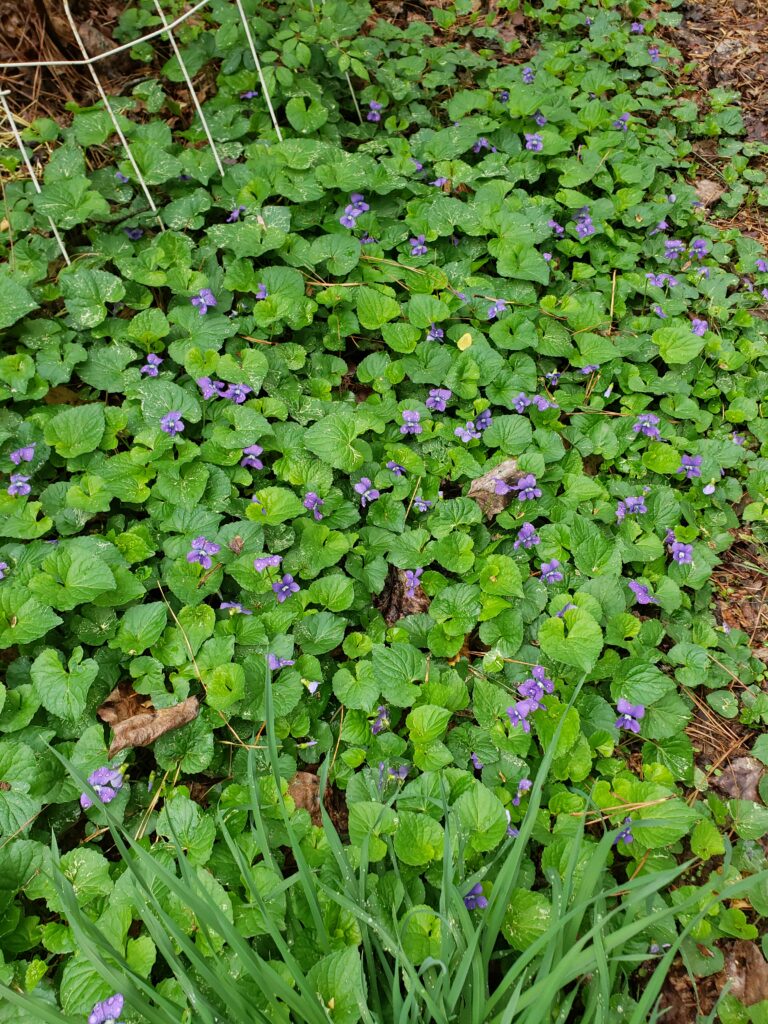
Why violets?
The leaves have a very mild flavor compared to other wild greens and are an excellent addition to any mixed-green salad. The blooms have a delicate floral taste and provide a pop of color to elevate any dish whether it’s an appetizer or dessert.
How do I grow my own violets?
These resilient plants can adapt to either containers or being planted directly in the ground. They like moist soil and partial sun but can truly make a life for themselves almost anywhere.
They can reproduce by seed or via their root system! Since blooms are required for seed, bear in mind that harvesting all the blooms will likely create a surge in growth from the roots.
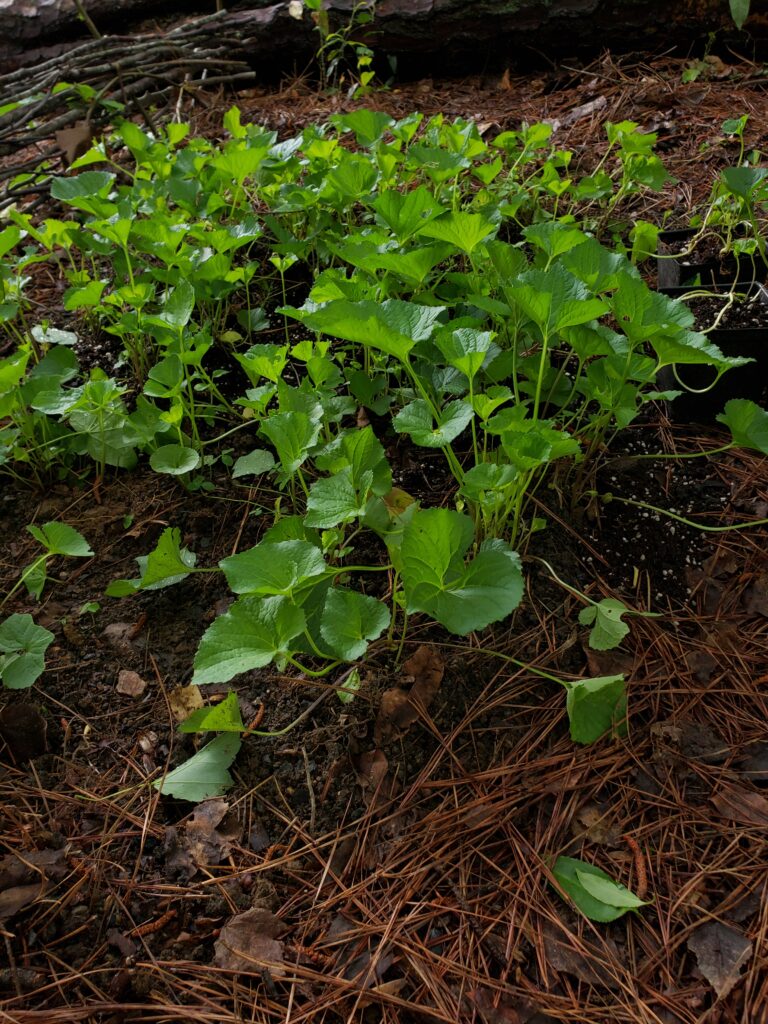
The common blue violet is a food forest essential as a vital source of vitamins and fiber. It’s prolific growing abilities make it almost impossible to over-harvest. Whether you use it as ground cover, landscaping borders, or in a garden all on it’s own, violets won’t disappoint you!

